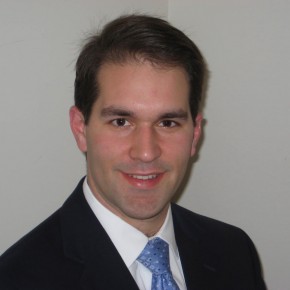
Robohub.org
VLAB: Drones – The commercial era takes off, but breaking the law is going to blow-up in our faces
Last Tuesday I had the pleasure of attending VLAB: Drones – The Commercial Era Takes Off at Stanford GSB. The event was truly fantastic and the panel was amazing. The moderator was Chris Anderson, former editor at Wired and CEO of 3D robotics. I’m really struck by how much he has become the face of the commercial drone industry. From his appearances on NPR and print media, he’s probably the most recognized drone advocate, and he makes some very powerful points. Fuelled by Moore’s Law and the cellphone industry supply chain,the drone/robotic era is coming and, though we’ve got to prepare for it, it doesn’t have to be scary.
 In particular, Anderson promoted one idea that deserves the attention of the drone industry: that by operating in a legal “grey area” (read: deliberately violating regulations that are perceived as unreasonable and unenforceable) drone enthusiasts will force regulatory movement, and this is a good thing. Anderson gave two examples of circumstances that challenge current regulations: Lego Mindstorms being classified by regulators as a cruise missile guidance system (and hence violating export controls), and flying drones in contravention to the FAA regulations governing the use of unmanned aircraft.
In particular, Anderson promoted one idea that deserves the attention of the drone industry: that by operating in a legal “grey area” (read: deliberately violating regulations that are perceived as unreasonable and unenforceable) drone enthusiasts will force regulatory movement, and this is a good thing. Anderson gave two examples of circumstances that challenge current regulations: Lego Mindstorms being classified by regulators as a cruise missile guidance system (and hence violating export controls), and flying drones in contravention to the FAA regulations governing the use of unmanned aircraft.
Technologists in general (and Silicon Valley in particular) take a dim view of regulations promulgated under the old order (e.g. Lyft, Uber, AirBnB), and it’s true that some aspects of the FAA regulations are out-of-date and no longer reasonable. But while I’m not completely outraged when technologists upend the status quo to make something new (and improved), this attitude works better in industries that don’t involve fast-flying heavy objects.
Let’s remember that the FAA’s primary goal is to keep people from getting killed by aircraft. When it comes to aircraft regulation – manned or unmanned – people on the ground are the main beneficiaries. We are not talking about regulating a relatively low-risk activity (like renting your room out with AirBnB); we are talking about regulating heavy objects hurtling over the heads of people who haven’t consented to be part of the experiment.
Our society rightly asks the government to ensure that activities that impose risk on others — especially those who did not consent — be minimized. We need to update our regulations, but aircraft operators need to respect the letter and spirit of the law as it stands. What standards do we have if not the law? If we follow the path of breaking all the rules, someone is going to accidentally kill a sympathetic bystander. Beyond the personal tragedy this will create, such an accident will set back our industry and the benefits we can provide to society by a decade.
In Afghanistan, one of my planes almost smacked into a helicopter, but it was the helicopter – not the drone – that had come, without clearance or radio calls, into an active artillery firing ROZ (restricted operating zone: this is an airspace control measure that makes sure that aircraft don’t run into artillery fire). Similarly, the first full-sized drone and manned aircraft collision involved a C-130 violating airspace control measures around an airfield.
Pilots are not infallible and often break the rules. The best drone operators have a different safety culture: one where there is proper approval for everything, because every move will be recorded and second guessed. Military drone safety culture is a great example of this approach. I hope this culture will permeate the civilian unmanned aircraft community as well.
Although breaking the rules might move us toward our unmanned enabled future a little bit faster, this is an incredibly dangerous path for our industry and our bystanders. The closing thought of VLAB Drones was that unmanned aircraft will eventually make the airspace safer for all users. The panel wondered if this was hyperbole, but it is inevitable when drones have a strong safety culture. Conversely, as long as we are the irresponsible jerks of the air, safety conscious regulators like the FAA will be unsupportive of us flying. When we, as a civilian unmanned aircraft industry, can be counted on as strong safety partner, and when people in general and commercial aviation are learning safety lessons from us, there will be no more foot dragging. We will get our airspace and the drone revolution will finally be here.
In the meantime: seriously, don’t do anything that could kill anyone, please. Especially if it is illegal. You will ruin it for the rest of us.
tags: 3D Robotics, Business, Chris Anderson, DIY, Drone, drones, Event, FAA, law, Laws, MIT, policy, Service Professional Military UAV, Social aspect, Stanford, UAS, UAV




